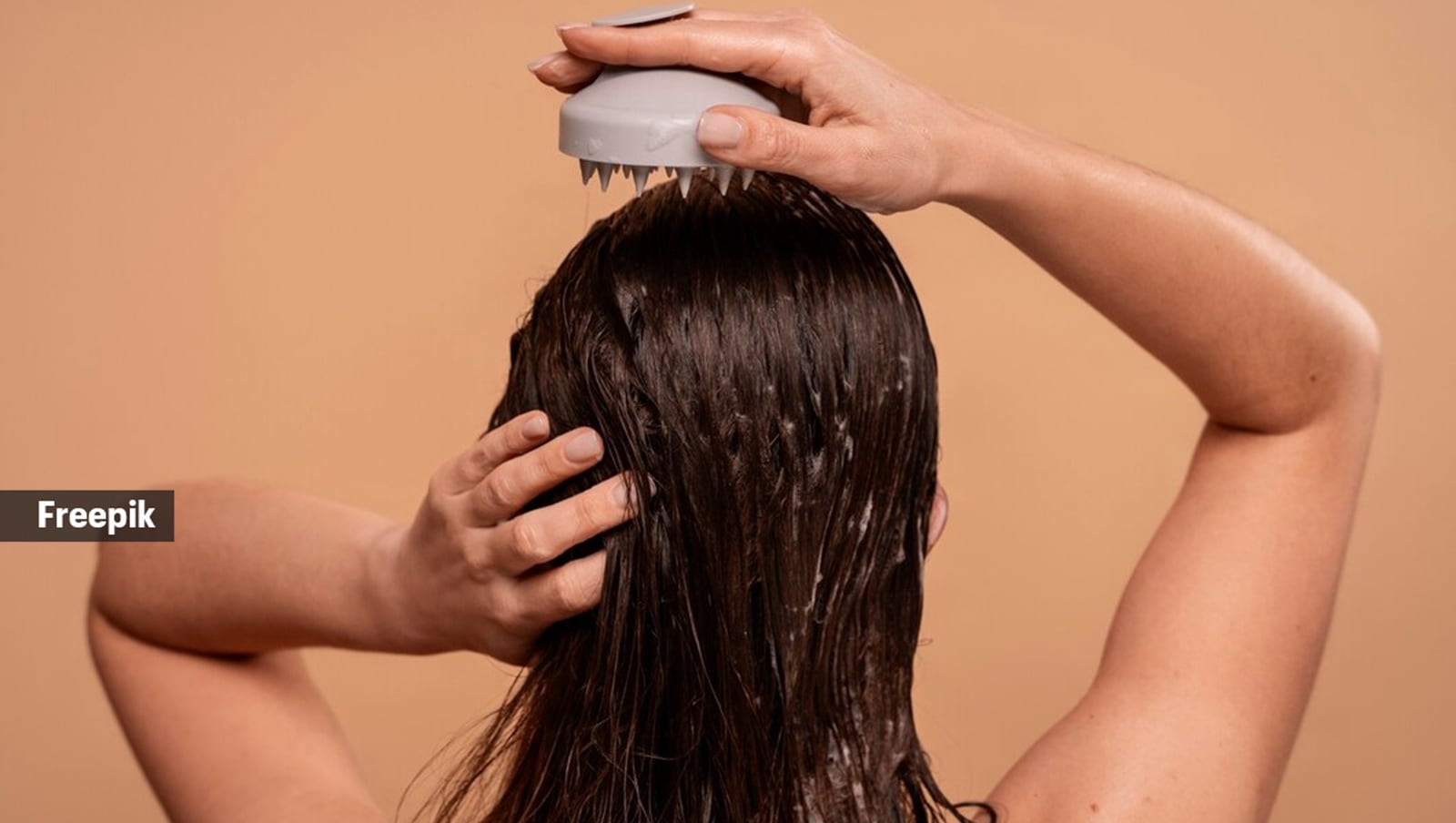Hair care is an integral part of our beauty routine. A fresh scalp leads to long, luscious hair and it is important to take care of scalp health to ensure growth and density. With the recent trend of chemical exfoliation taking over the world of skincare, haircare enthusiasts aren’t too far behind. The scalp is also skin, right? It’s a living part of your skin and requires care and maintenance, just like the rest of your body. But is exfoliating your scalp really necessary? We reached out to an expert to find out.
Dr Shrilekha Shringarpure, Cosmetologist and Trichologist, Co-founder & Head – The Preserve Clinic, said that scalp exfoliation is necessary as it plays an important role in removing accumulated dirt, excess sebum and keratin along with product build-up from the scalp to create the perfect foundation for healthy hair growth, and produce a clean, healthy scalp. According to her, in most cases, the leading cause of hair fall is a compromised scalp health along with complementary scalp issues.
Physical exfoliators may contain ingredients like apricot seeds, pomegranate seeds, or other components that create friction against the scalp, helping to remove dead skin cells. These exfoliants require a lot of massagingscrubbing, and rubbing against the scalp to be effective. However, physical exfoliants are not suitable for dry or sensitive scalps.
Chemical exfoliators contain active ingredients such as lactic acid, glycolic acid, or salicylic acid, which work to exfoliate the scalp without the need for physical scrubbing. They are applied to the scalp, left on for 10-15 minutes (depending on the strength of the peel), and then washed off.
“Scalp exfoliators containing an acidic peeling agent with natural peppermint, rosemary, and fruit acid extracts are really effective in removing the excess sebum, keratin and product build-up,” says Dr Shringarpure. According to her, patients can incorporate a shampoo containing ketoconazole and zinc pyrithione in their hair wash routine if they have a flaky and inflamed scalp.
What are the different kinds of scalp types?
Oily Scalp:
An oily scalp occurs when the sebaceous glands produce excess sebum (natural oil). This can cause hair to look greasy, even shortly after washing. People with oily scalps often struggle with dandruff, as the excess oil can lead to an overgrowth of yeast.
To manage an oily scalp, it’s important to use lightweight, clarifying shampoos that balance oil production without stripping the hair. Look for exfoliating ingredients containing salicylic acid, which is highly effective at removing excess sebum and product buildup.
 A normal scalp is well-balanced, producing just the right amount of oil (Source- Freepik)
A normal scalp is well-balanced, producing just the right amount of oil (Source- Freepik)
Dry Scalp:
A dry scalp lacks moisture, leading to flakiness, itching, and irritation. This can be caused by factors like cold weather, harsh shampoos, or not drinking enough water. People with dry scalps often experience small, white flakes similar to dandruff, but caused by dryness rather than excess oil.
If you have a very dry scalp, you should opt for oil-based exfoliators that combine ingredients like lactic or glycolic acid with oils such as rosemary or avocado oil. Using hydrating shampoos and conditioners, along with scalp oils or treatments, can help restore moisture balance.
Sensitive Scalp:
A sensitive scalp is prone to irritation and discomfort, often reacting to certain hair products, environmental factors, or even stress. Symptoms can include redness, itching, burning, or tightness. People with sensitive scalps need to be careful with the products they use, opting for hypoallergenic or sulfate-free options that are gentle and soothing.
Normal Scalp:
A normal scalp is well-balanced, producing just the right amount of oil. It doesn’t get too greasy or too dry, and is typically free from irritation or flakes. People with normal scalps can use a variety of hair care products and are less likely to experience scalp-related issues. Maintaining a healthy scalp is key to keeping this balance.
Points to keep in mind:
“Never exfoliate a dry scalp. Always spray some water and ensure your scalp is damp before starting the exfoliation process. Follow this order: exfoliation, shampoo, and then conditioner,” says Dr Shringarpure. Start small, perhaps once a week or once every 15 days, and gradually increase to twice weekly as desired. Avoid exfoliation if you have an active infection, such as ringworm, an open cut or wound and lice.
Discover the benefits of our subscription!
Stay informed with access to our award-winning journalism.
Avoid misinformation with trusted, accurate reporting.
Make smarter decisions with insights that matter.
Choose your subscription package
📣 For more lifestyle news, click here to join our WhatsApp Channel and also follow us on Instagram
